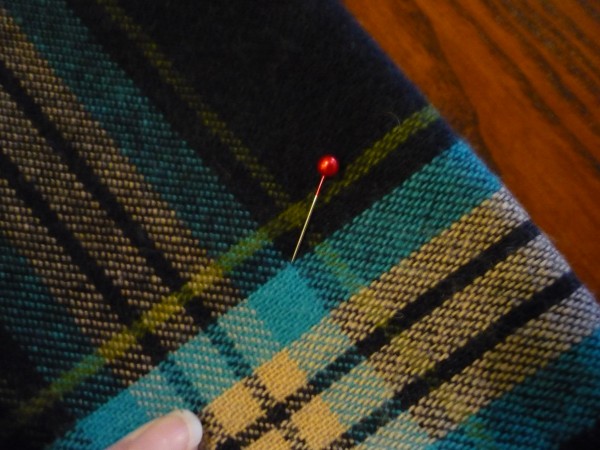We LOVE plaid fabric. What's more fun than a summer madras? Making your own!
You can create your own lovely plaid fabric with just a few simple steps - what a fun way to create a unique fabric for that special little project.
Start by lining your fabric with a fusible stabilizer or medium weight fusible interfacing. We like a fusible tear-away because it gives the fabric just enough stiffness to stitch without puckering.
Choose three thread colors. We did this plaid with Mettler Silk Finish 50 weigh in three summery colors. The finish on this thread is just smooth enough to stand out, and just matte enough to look like it is woven into the fabric.
Mark your fist set of lines. On our sample, we marked lines 1.5" inches apart. Draw both vertical and horizontal lines.
Thread your bobbin with a lighter weight thread than you will be stitching with on top. We used Mettler Seracor thread in white. If you have the option, thread your bobbin with "embroidery tension" - through the hole in the finger on the bobbin case if it has one. If you do not have a finger on your bobbin case, your machine may have a setting for adjusting the bobbin tension for embroidery - check your manual or with your local dealer.
With the first color (in our case, the light green), stitch a wide zig-zag. The zig-zag stitch should be shorter than normal, but not as short as a satin stitch. You want the base fabric to show through. On most machines, this will be a length of 1 to 1.5. Stitch on your marked lines, using the center mark on your sewing machine foot to guide your stitching along your marked lines. Stitch all of the lines in one direction first, then go back and stitch the perpendicular lines.
Once you have finished stitching the first set, mark your lines for the second set. We made our second set 1" apart.
Thread your machine with your second color (in our case, the blue-green color), and stitch along your marked lines with a triple straight stitch or other heavy straight-line stitch.
Mark your lines for your third set of stitching. We made ours 1 1/4" apart.
Thread the machine with the third color (in our case, pink). Stitch with a very narrow zig-zag stitch (about a 1 on most machines). The length of the zig-zag should also be about a 1. Stitch along the marked lines.
Trim your thread tails, and your fabric is done! You can now use this fabric in any project, just like you would any other piece. Don't remove the stabilizer - just let it function as an interfacing in your project.

.JPG)


























